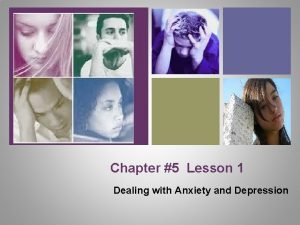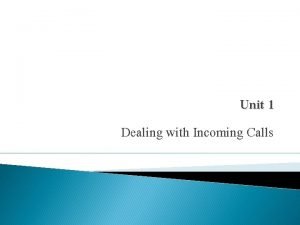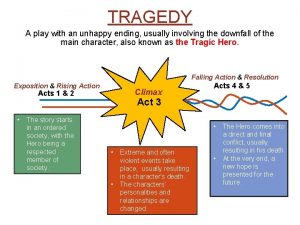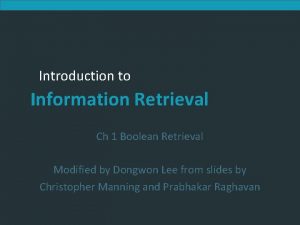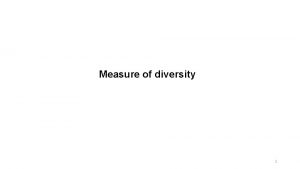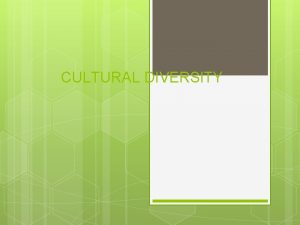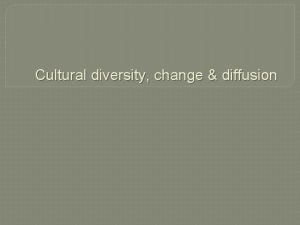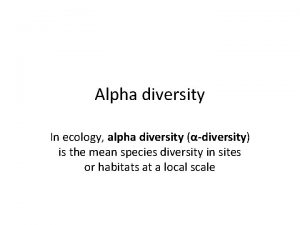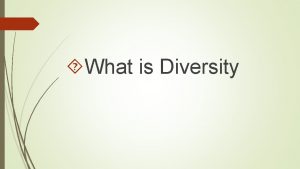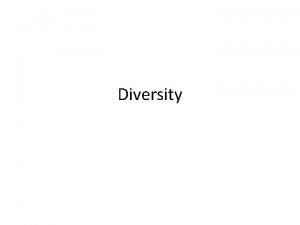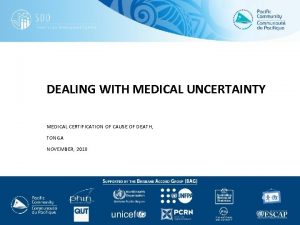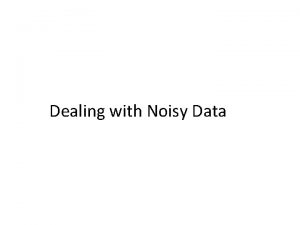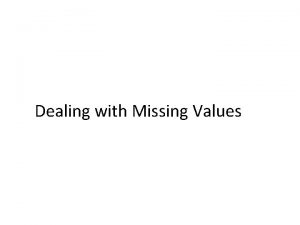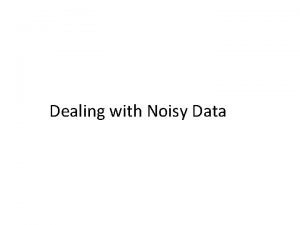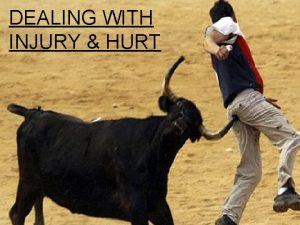Dealing with diversity in medical education Karen StegersJager




















- Slides: 20

Dealing with diversity in medical education Karen Stegers-Jager Institute of Medical Education Research Rotterdam (i. MERR) June 9 th 2017


Getting in – admissions 1 1 Stegers-Jager et al Med Educ 2015; 1: 124 -133.

Selection procedure Erasmus MC +

Who gets in? - ethnicity § Dutch < Non-Dutch < Sur/Ant & Tur/Mor/Afr § Dutch ≈ Non-Dutch § Dutch < Non-Dutch < Sur/Ant & Tur/Mor/Afr & Asian

Who gets in? – social background § non 1 st gen univ student ≈ 1 st gen univ student § non 1 st gen univ student < 1 st gen univ student

Discussion - Ethnicity and social background independent predictors of admission, but surprising differences academic and non-academic criteria - No differences non-academic criteria self-selection before application? - Poorer performance on cognitive tests non-traditional students - Language skills? / Cultural aspects?

Practical implications - Include non-academic criteria in selection procedure - Use different selection criteria concurrently and explore impact of weighting on student diversity

Staying in – progression and retention 1 1 Stegers-Jager et al Med Educ 2012; 46: 575– 85.

Results – Performance - Year 1 course completion: Dutch (64%) > Non Dutch (52%) > Sur/Ant (37%), Asian (50%) - Preclinical course completion: Dutch (41%) > Non Dutch (29%) Dutch (41%) > Sur/Ant (19%), Asian (24%) - Good clinical performance: Dutch (88%) > Non Dutch (67%) Dutch (88%) > all 4 groups (54 -77%)

Results – Performance (adjusted 1) - Year 1 course completion: Dutch (64%) > Non Dutch (52%) > Sur/Ant (37%), Asian (50%) - Preclinical course completion: Dutch (41%) > Non Dutch (29%) Dutch (41%) > Sur/Ant (19%), Asian (24%) - Good clinical performance: Dutch (88%) > Non Dutch (67%) Dutch (88%) > all 4 groups (54 -77%) 1 Adjusted for age, gender, pu-GPA & socio-demographic factors

Discussion - Differences across ethnic minority groups in comparisons to majority students - Greater ethnic disparities in clinical training § clinical skills? § communication styles? § stereotype threat? § examiner bias? §

Practical implications Preclinical course: - Targeted support Clinical course: - Less subjective grading - Awareness cultural bias

Staying in – different types of examinations 1 1 Stegers-Jager et al Adv Health Sci Educ 2016; 21: 1023 -1046.

Different types of examinations Written Theoretical Clinical case A 75 -year-old man, heavy smoker… Skills Clinical

Discussion – main findings § Differences across ethnic subgroups and between different types of written and clinical exams § CPSTs, language test & clinical exams: all 3 non-western groups ↓ § Block tests & writing skills tests & Western minority: less consistent § Age, gender, pu-GPA and socio-demographic variables could explain: § YES: differences in theoretical exams (CPSTs & block tests) § NO: differences in language, writing & clinical skills exams § 1 st generation university students only ↓ on language tests

Discussion – explanations § Difference between CPSTs & block tests § Nature & required preparation § No indication lower level clinical skills Western minority & 1 st gen students § More subjective grading in clinical training? § Underperformance in language, writing & clinical skills exams not explained: § Cultural differences in communication styles?

Practical implications § Avoid unintended effects of certain types of examinations for certain groups of students consider diversity in both test construction & implementation § Offer additional exam-specific support for specific groups e. g. formal meetings to prepare for CPSTs

Take-home message § In order to select and retain non-traditional students in the medical education pipeline, medical schools must design assessment strategies and, if necessary, additional targeted support programmes that create a level playing field for a diverse student population More information: k. stegers-jager@erasmusmc. nl

Statements 1. In the Netherlands, we need minority doctors for minority patients 2. Affirmative action for non-traditional applicants is necessary 3. Differences in clinical grades are due to subjective grading 4. Lower clinical grades reduce chances for specialty training 5. Cultural sensitivity should be taught at (medical) school
 Genetic diversity vs species diversity
Genetic diversity vs species diversity Ecosystem jigsaw activity
Ecosystem jigsaw activity Assimilation linguistics
Assimilation linguistics What are abiotic factors
What are abiotic factors Section 2 dealing with other nations
Section 2 dealing with other nations Contact center stress
Contact center stress Market follower
Market follower It is a genre of speculative
It is a genre of speculative Chapter 5 lesson 1 dealing with anxiety and depression
Chapter 5 lesson 1 dealing with anxiety and depression Chapter 5 lesson 1 dealing with anxiety and depression
Chapter 5 lesson 1 dealing with anxiety and depression Dealing with competition marketing management
Dealing with competition marketing management Unit 1 dealing with incoming calls
Unit 1 dealing with incoming calls Dealing with anger bible
Dealing with anger bible Dealing successfully with difficult changes in your life
Dealing successfully with difficult changes in your life Lexical items
Lexical items A play with an unhappy ending is traditionally called a(n)
A play with an unhappy ending is traditionally called a(n) Dealing with unstructured data
Dealing with unstructured data Reuters electronic trading
Reuters electronic trading Dealing with unstructured data
Dealing with unstructured data The branch of zoology dealing with insects
The branch of zoology dealing with insects The branch of zoology dealing with insects
The branch of zoology dealing with insects









